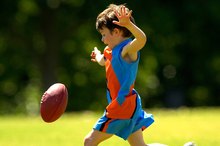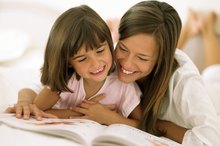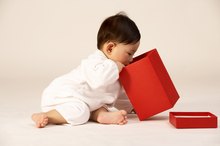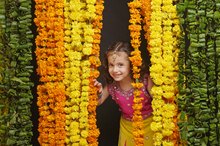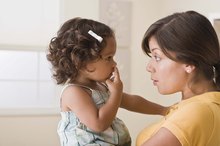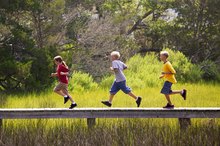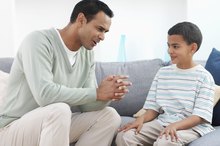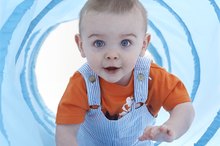Fast & Slow Activities for Preschool Children
Preschoolers have an enormous amount of energy and often are in constant motion. They also are naturally drawn to rhythms and music. Why not use that liveliness and love for music to teach your preschooler about the concept of fast and slow? By incorporating some learning activities into your playtime, you can help your tot develop an understanding of one set of opposites.
Dancing to the Beat
When young children hear music, they often can't help themselves and begin moving to the beat. Tell your preschooler you are going to have a dance party and find a variety of music with different tempos. Start with a song with a fast, upbeat tempo and dance with your child. Point out how this song makes you want to move quickly. Then turn on a song with a slower tempo and watch how your little one's movements change. Show him how you move more slowly when the song has a slower beat. You can also find songs that have a tempo change in them and ask your child to listen to the music to decide whether he is going to be fast or slow while he dances 1.
- When young children hear music, they often can't help themselves and begin moving to the beat.
- Tell your preschooler you are going to have a dance party and find a variety of music with different tempos.
Homemade Instruments
Galloping Activities for Children
Learn More
Children don't have to be moving to music in order to learn about the concept of fast and slow -- they also can be creating it. Help your child make a variety of homemade instruments 1. For example, fill a plastic bottle with rice or beans to make a maraca, or use an empty, lidded plastic container as a drum. Then use your instruments as you sing familiar songs or play music. Encourage your preschooler to shake or beat on her instrument in time to the music. When the music is fast, she can play her instrument with a fast beat, and then slow down when the music gets slower.
- Children don't have to be moving to music in order to learn about the concept of fast and slow -- they also can be creating it.
- When the music is fast, she can play her instrument with a fast beat, and then slow down when the music gets slower.
Playground Fun
The playground is a fine place to learn about the fast and slow concept as your preschooler moves in a variety of ways. Point out the times he is moving fast or slow as he plays. When he is swinging, discuss how he can make himself move faster. "When you pump your legs hard, you swing fast, and when you stop your legs, your swing slows down." Ask him to run fast across the playground, or move slowly as he balances on the edge of a low wall.
- The playground is a fine place to learn about the fast and slow concept as your preschooler moves in a variety of ways.
- Ask him to run fast across the playground, or move slowly as he balances on the edge of a low wall.
Animal Actions
Skimming Activities for Kids
Learn More
Preschoolers also love to pretend, so play an imaginative game with your little one. First ask her to name some animals that move quickly, and help her list some, such as cheetahs, horses or hummingbirds. Then see whether she can come up with slow-moving animals such as snails, turtles or sloths. Then call out different animals names and pretend to move like each one. Remind her whether the animal she is pretending to be is fast or slow and model the movements as you play together.
- Preschoolers also love to pretend, so play an imaginative game with your little one.
- First ask her to name some animals that move quickly, and help her list some, such as cheetahs, horses or hummingbirds.
Related Articles
References
- Education.com: How Music Can Help Your Child Learn
- Education.com: Preschool Science: Learning at the Playground
- Mofredj A, Alaya S, Tassaioust K, Bahloul H, Mrabet A. Music therapy, a review of the potential therapeutic benefits for the critically ill. J Crit Care. 2016;35:195-199. doi:10.1016/j.jcrc.2016.05.021
- Kordovan S, Preissler P, Kamphausen A, Bokemeyer C, Oechsle K. Prospective study on music therapy in terminally ill cancer patients during specialized inpatient palliative care. J Palliat Med. 2016;19(4):394-399. doi:10.1089/jpm.2015.0384
- Wang W-C. A study of the type and characteristics of relaxing music for college students. Proc Mtgs Acoust. 2014;21:035001. doi:10.1121/1.4902001.
- Ellis RJ, Thayer JF. Music and autonomic nervous system (dys)function. Music Percept. 2010;27(4):317–326. doi:10.1525/mp.2010.27.4.317
- De Witte M, Spruit A, Van Hooren S, Moonen X, Stams GJ. Effects of music interventions on stress-related outcomes: a systematic review and two meta-analyses. Health Psychol Rev. 2019;:1-31. doi:10.1080/17437199.2019.1627897
- Aalbers S, Fusar-Poli L, Freeman RE, et al. Music therapy for depression. Cochrane Database Syst Rev. 2017;11(11):CD004517. doi:10.1002/14651858.CD004517.pub3
- Lee KS, Jeong HC, Yim JE, Jeon MY. Effects of music therapy on the cardiovascular and autonomic nervous system in stress-induced university students: a randomized controlled trial. J Altern Complement Med. 2016;22(1):59-65. doi:10.1089/acm.2015.0079
- Lee JH. The effects of music on pain: a meta-analysis. J Music Ther. 2016;53(4):430-477. doi:10.1093/jmt/thw012
Writer Bio
Stacey Chaloux is an educator who has taught in both regular and special education early childhood classrooms, as well as served as a parent educator, teaching parents how to be their child's best first teacher. She has a Bachelor of Science in education from the University of Missouri and a Master of Education from Graceland University.
